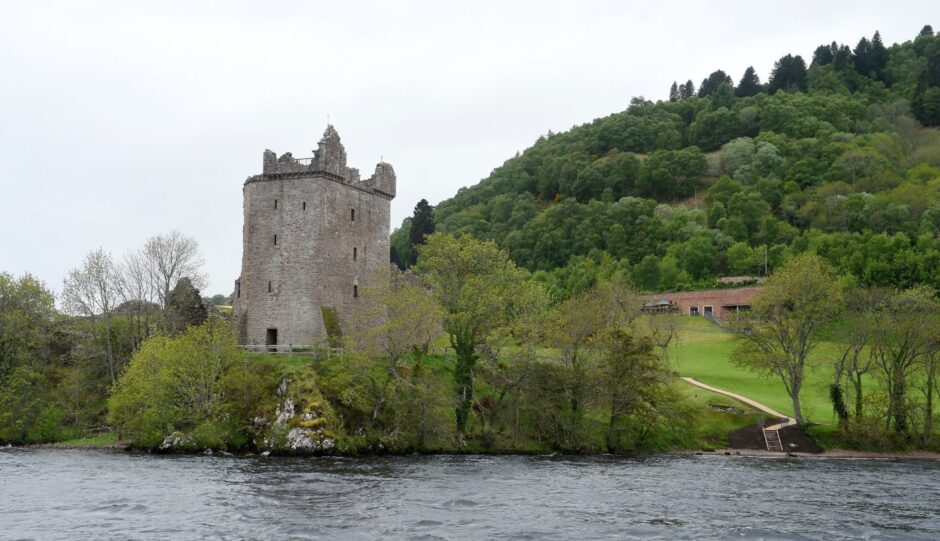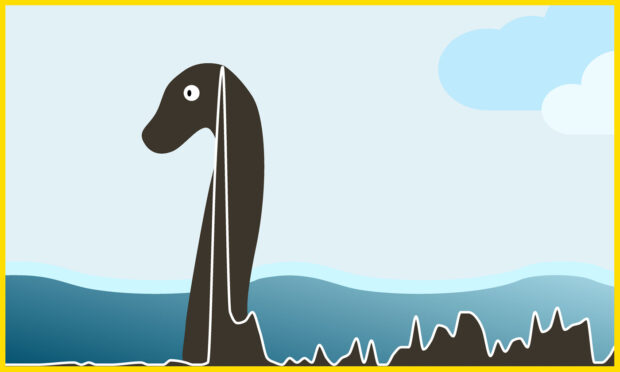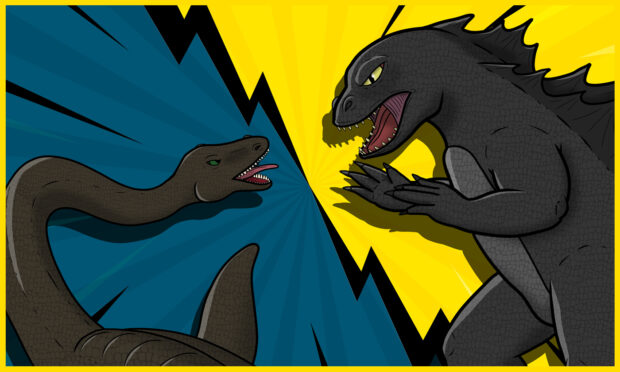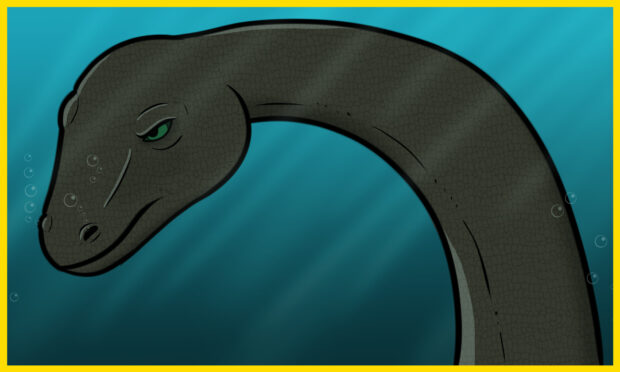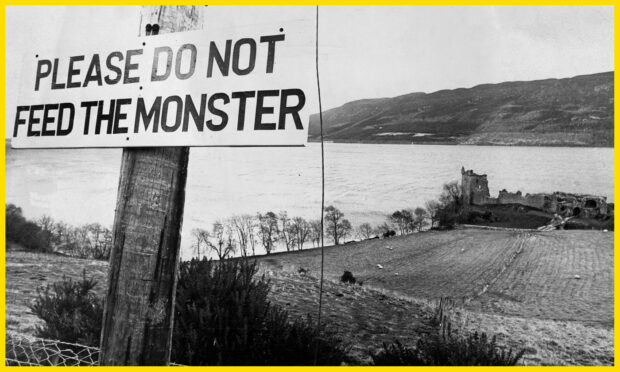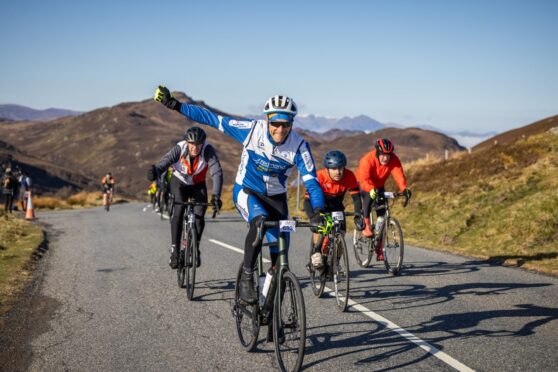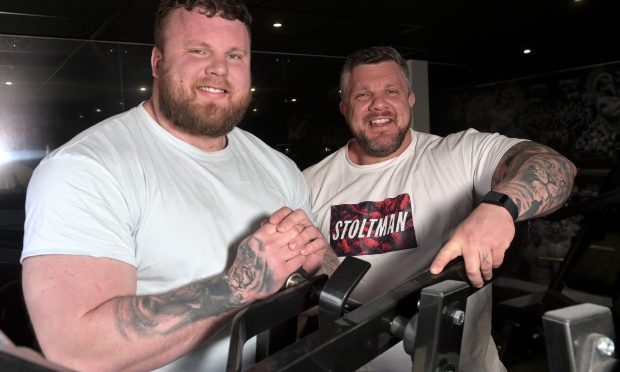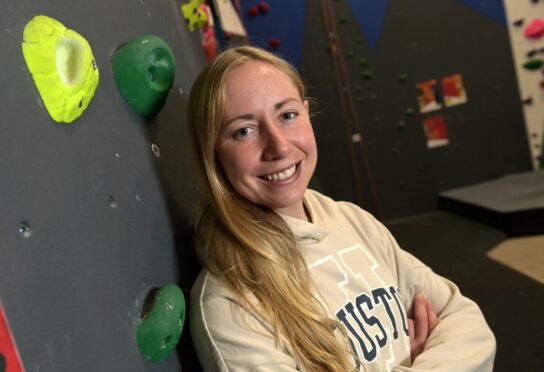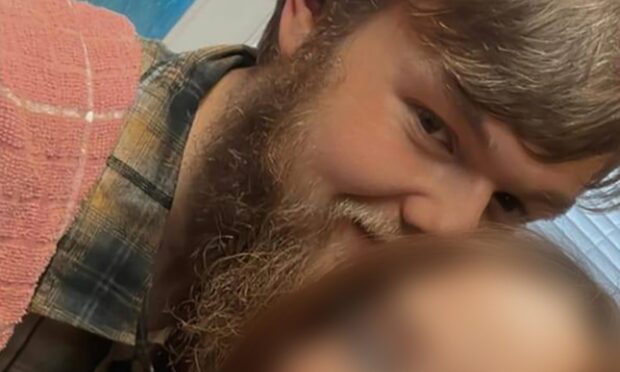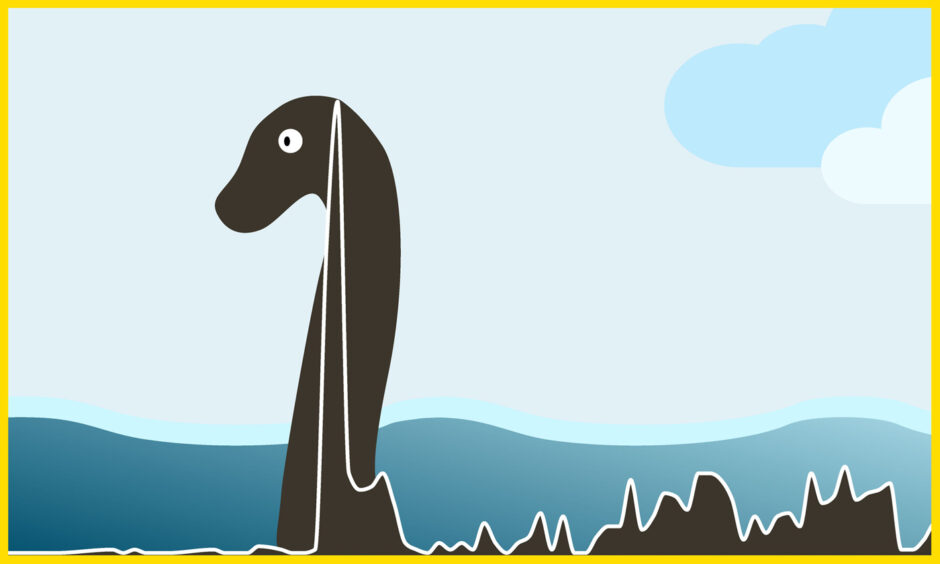
The Loch Ness Monster is one of the most recognisable cultural icons in the world, so it’s no surprise that sightings of her create so much excitement.
People come from all over hoping for a glimpse of Nessie.
So is there really something lurking in the loch?
We’ve mapped the sightings out, and analysed the data broken down by gender, by the characteristics of the spotter, and the timings of sightings to bring you as much information as possible.
Happy hunting.
When was the first Loch Ness Monster sighting?
The first sighting of Nessie was reportedly made in 565 AD, by St Columba.
Unlike modern-day Nessie hunters, the patron saint of Derry was not thrilled to meet Nessie. It’s reported that St Columba ordered the beast, which was rushing towards one of his companions, to turn back.
Another significant sighting of Nessie would come centuries later in 1933 by the manager of the Drumnadrochit Hotel, Mrs Aldie Mackay.
Her account was reported by the Inverness Courier and this truly began the modern legend we know as the Loch Ness Monster.
Since then, most sightings report shapes in the water, or fast wakes that couldn’t be attributed to any boat activity.
Loch Ness Monster sightings were incredibly popular in the 30s, and higher in the 60s to 80s compared to now.
Although there have continued to be spots of Nessie in the past 30 years, they’ve been much fewer than before as Nessie takes a break from life in the public eye.
Where is the most likely place to spot the Loch Ness Monster?
Loch Ness is expansive. It’s the second largest loch in Scotland by surface area – so where are the best places to set up camp if you are determined to say hello?
Recent sightings of Nessie have pinpointed her in a number of different locations across Loch Ness.
Based on our analysis of the sighting register, if you’re hoping to see her you should go to Urquhart Castle, or Urquhart Bay more generally.
Of the 196 sightings that gave locations for Nessie sightings, 33 of them were at Urquhart Castle, while a further 27 of them were at Urquhart Bay.
If you are determined to add your name to the growing list of Nessie seekers the best place to start is the Loch Ness Centre in Drumnadrochit.
Here you can get inspired and learn more about the Loch Ness Monster through the centre’s exhibition featuring a real-life sonar patrol boat and submarine observation chamber.
Climbing up to the peak of Urquhart Castle you will get a gorgeous, panoramic view of Loch Ness where you can keep an eye out for Nessie.
However, it’s not the only place that is popular for seeing her.
Twenty-five sightings were made at Fort Augustus, on the south side of the loch, while 21 were made at Dores.
From Fort Augustus you can sail out onto Loch Ness via boat trips which provide more history of the loch while you keep your phones and cameras on hand.
The map below shows the general locations of spots throughout the years.
There’s also been a host of webcam sightings, so if you can’t get to Loch Ness to try and find the monster yourself you could always watch the webcam.
Several webcams span the area, and run 24 hours a day, 365 days a year.
When’s the best time to spot Nessie?
Most sightings were made on a Saturday, followed by a Sunday.
We’ll let you decide if that’s because she is more amenable to seeing guests after a hard week in the loch or simply because the loch sees more weekend traffic.
However, if you’re visiting through the week, you’re still in luck, as the data shows that sightings are pretty equal for the remaining days.
The elusive Loch Ness Monster doesn’t seem to have a specific sleeping pattern, or any form of routine.
She’s been seen at various times throughout the day, with spots from 6am to 10pm. However, she’s also been seen out and about at 3am being a true party monster.
Our analysis shows she generally keeps quite sociable hours with the most spots made between 3pm and 4pm – with 20 different sightings throughout the years.
This is followed by 15 between the hours of 11am and 12pm, and 11 between 10am and 11am.
Who claims to have spotted Nessie?
Are you more likely to spot the Loch Ness Monster while you’re out for a stroll in your local area, or if you’re coming from far away with your sights set on adding to the register?
The data often doesn’t specify whether a spot is made by a local resident or a tourist.
However, we’ve looked at those who do mention why they’re in the area to see if tourists or locals make more spots.
Tourists were by far the biggest group, with 82 people stating that they were visiting the area.
Twenty-eight people identified themselves as local residents, while nine people said they were a skipper or a captain on one of the boats frequenting the loch.
Six of the spots were from self-proclaimed ‘Nessie-hunters’.
If you don’t live near the loch, you can always try your hand at spotting Nessie by other means.
A total of 23 sightings have been reported to the Loch Ness Sightings Register recorded via the webcam, two via Google Earth and one on Apple Maps.
Analysis shows that 243 of the spots were made by men, and 147 by women. A further 119 were made by more than one person, which could have been a couple, a family or a group of people.
The most prolific spotter of the Loch Ness Monster is photographer Frank Searle. He spotted Nessie more than 20 times and was a well known as a Nessie-hunter. He passed away in 2005.
Other successful spotters include Eoin O’Faodhagain, based in Ireland, who has made a number of sightings in recent years via the webcam, as well as some in-person sightings.
What do spotters say she looks like?
The more enthusiastic spotters recorded in the register provided descriptions of Nessie, which range from comparing her to creatures such as whales or dolphins, to more vague recollections of heads and humps in the water.
Her shape, size and look have been much debated throughout the years.
… while dark, hump/humps, large, long, black, grey and green are words often used to describe her.
And it’s not just Nessie’s look that has people divided.
But again people’s accounts wildly vary- and the true size of Nessie remains unknown.
Where can I find out more on Loch Ness Monster sightings?
For more information on Nessie sightings, including full descriptions of Nessie and locations as well as some pictures and information about the loch, visit the Official Loch Ness Monster Sightings Register.
It’s run by Gary Campbell, who was inspired to start the register after his own brush with Nessie.
He said: “I saw something unexplained in the loch in March 1996. I went to report the sighting and discovered that no one was keeping a list and in fact, none had been officially recorded since 1972.
“My wife Kathy and I set up the register and it’s been going ever since. I belong to Argyll but have lived in Inverness since the early 1990s – my wife is from Inverness.
“I’m quite unusual in terms of Nessie-hunters in that I had no real interest until I saw something but now I just want to try to work out what I saw (it was a small black hump that came out of the water twice in quick succession) – this is why we keep on doing it.”
Methodology
Data for this project was collated from “The Official Loch Ness Monster” website.
Information was gathered on the gender of the spotter (where possible), whether it was a tourist spot or a local spot, and any other information provided.
An approximate location was assigned based on the location of the description of the sighting from the register.
Not every sighting, particularly older sightings, have the full range of data available.
If you have any further information, please email datateam@dctmedia.co.uk.
